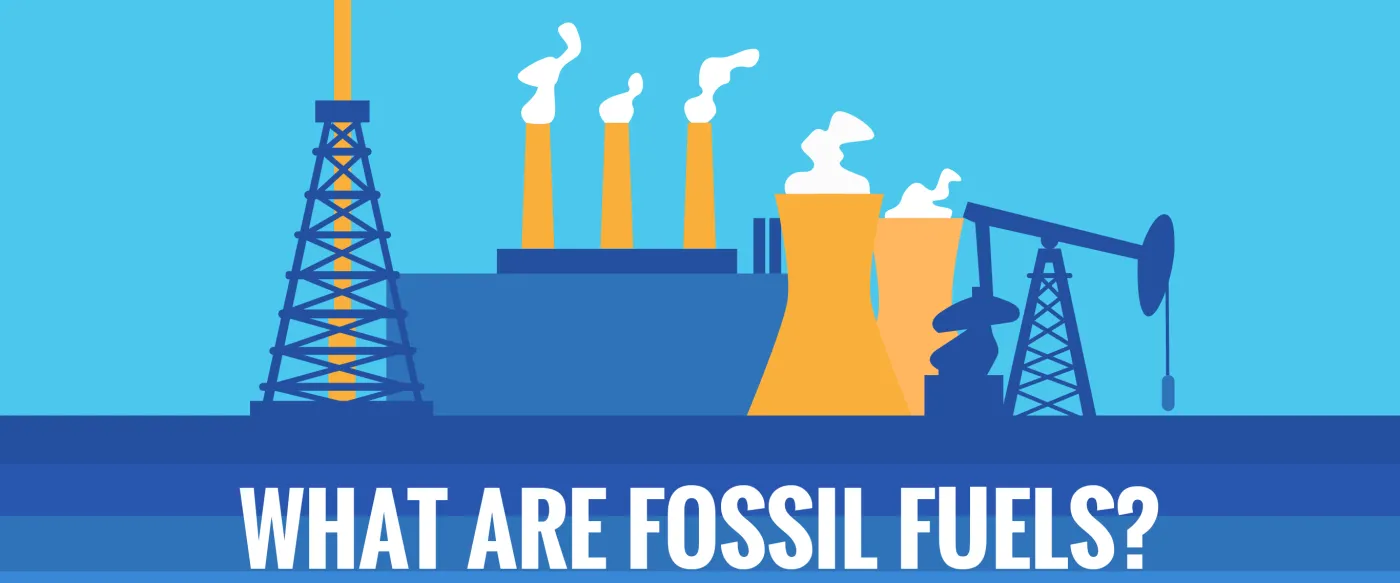
What Are Fossil Fuels?
Ever wonder where a “fossil fuel” gets its name?
Fossil fuels are compound mixtures made of fossilized plant and animal remnants from millions of years ago. The creation of fossil fuels—either oil, natural gas, or coal—from these fossils is determined by the type of fossil, the amount of heat, and the amount of pressure.
I. THE BEGINNING
Fuels are sources of energy and fossil fuels are no different. The energy in fossil fuels comes from the sun, which drives photosynthesis to change carbon dioxide and water into the molecular building blocks of ancient plants and animals. Both plants and animals build their bodies using predominantly carbon and hydrogen atoms and it is the stored energy in the fossilized hydrocarbon-type compounds that serve as fuel when burned.
II. DECOMPOSITION
As the fossil material begins to get buried deeper and deeper underground it is subjected to increased heat and pressure. As the heat rises, the fossil molecules begin to break apart. The initial breakdown creates partially changed materials, like peat from plants and kerogen from plankton. These transitional materials can be used as fuel sources too, however, they have less stored energy than fully formed coal, natural gas, or oil.
III. FOSSIL FUELS FORM
After millions of years underground, the compounds that make up plankton and plants turn into fossil fuels. Plankton decomposes into natural gas and oil, while plants become coal. Today, humans extract these resources through coal mining and the drilling of oil and gas wells on land and offshore. They are sought after because they contain stored energy, and when burned, fossil fuels power machinery and provide transportation, as well as the electricity essential to modern-day life. They also contain essential ingredients used within the chemical industry.
IV. THE CHEMICAL BREAKDOWN
Crude oil is a mixture of thousands of different molecules made up of compounds containing mostly hydrogen and carbon. Every crude oil deposit has a unique composition and proportion of these hydrocarbons. Based upon this chemical composition, crude oil can have a range of densities from thick and viscous to light and fluid. It is designated as either sweet or sour depending upon residual amounts of sulfur and can range from a transparent golden yellow to a deep black.
In order to be used within industry and for transportation the crude oil must be separated into its individual hydrocarbon-based fuels and lubricants. With so many molecule types, there isn’t an industry that doesn’t use oil products in some form or another. Oil is used as lubricants, fuel, in plastics, cosmetics, and even medicine. In general, oil’s composition is classified into four different types of molecules.
In order to be used within industry and for transportation the crude oil must be separated into its individual hydrocarbon-based fuels and lubricants. With so many molecule types, there isn’t an industry that doesn’t use oil products in some form or another. Oil is used as lubricants, fuel, in plastics, cosmetics, and even medicine. In general, oil’s composition is classified into four different types of molecules.
V. OIL IN THE ENVIRONMENT
After all this transformation, oil is naturally found in the environment. It typically is deep below the surface of the earth, but can also be found bubbling up or even in the form of tar balls on the beach.
VI. WHAT CAN WE LEARN FROM OIL SPILLS?
An oil spill can introduce massive amounts of oil into the environment. The Deepwater Horizon oil spill was the largest marine oil spill in U.S. history, dumping over 3.17 million barrels of oil into the Gulf of Mexico. The fire and explosion of the drilling rig cost 11 people their lives.
Researchers took to the sea to learn as much as they could about the impacts the oil had on the surrounding marine environment, as well as the nearby Gulf communities. Since the spill in 2010, the Gulf of Mexico Research Initiative has funded hundreds of scientists and learned a great deal about what happened to the spilled oil and what impact the spill had on natural environments along the northern Gulf of Mexico coastline. Explore some of the findings below.
Researchers took to the sea to learn as much as they could about the impacts the oil had on the surrounding marine environment, as well as the nearby Gulf communities. Since the spill in 2010, the Gulf of Mexico Research Initiative has funded hundreds of scientists and learned a great deal about what happened to the spilled oil and what impact the spill had on natural environments along the northern Gulf of Mexico coastline. Explore some of the findings below.

